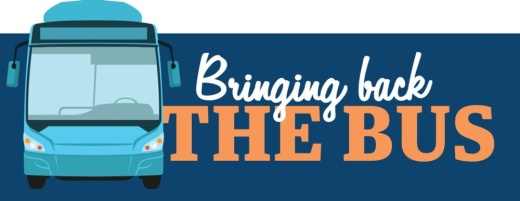Late in 2020, the DAA opened up a survey to hear from residents directly. Some of the comments struck a familiar refrain that will be recognizable to longtime Austinites.
“Bring back the 'Dillo,” multiple respondents wrote. One resident cited fond memories riding in the old trolley cars through downtown Austin as a child, another said revitalizing the downtown shuttle would “replace so many short Uber rides and bad drunken scooter decisions.”
The new downtown circulator routes would not be exactly the same as Capital Metro’s old ‘Dillo routes that stopped running in 2009. For one, according to Melissa Barry, vice president of planning at the DAA, the old trolley cars would likely be replaced by more modern public transit vehicles. But Barry said the study came out of a consistent call from the community to restore the service the ‘Dillo provided.
“What we’ve heard consistently over the years is a call to bring back the ‘Dillo. That’s one of the main reasons we took this feasibility study on, to be responsive to this request,” Barry said.
Results of the study released early in 2021 give more detail on the potential routes, funding options and frequency of the new circulator service. Consultant NelsonNygaard recommends the circulator service be free—just as the ‘Dillo was—and outlined service that would run every five or 10 minutes, depending on the time of day, with the flexibility to increase during large events such as the Austin City Limits Music Festival or South by Southwest Conferences & Festival.
Two route options were presented in the report: one from South Congress Avenue to Plaza Saltillo in East Austin and the other between the Seaholm District and Rainey Street area. Barry said respondents slightly favored the Plaza Saltillo route, so if only one could be implemented, that would be the preference, but she also said the routes could expand in the future.
“It’s always important to focus and condense resources as a starting point. Although there are two routes recommended, most of these circulators start with a focus and grow over time,” she said.
Both routes combined would cost $5.26 million annually. The report does not identify the funding source specifically, but it presents a number of potential options, including Capital Metro, the city of Austin’s hotel occupancy tax funds or major employers in the area.
Barry said it is too early to say when the circulators could start running through Austin’s downtown streets. Right now, the DAA is focusing on monitoring how travel patterns return to normal as the community continues to recover from the pandemic.
The organization is also thinking ahead to how the circulator could align with planned construction projects such as the $4.9 billion I-35 overhaul and Capital Metro’s $7.1 billion Project Connect plan to revamp public transportation.
Construction will be heavy in the downtown area when both those large projects begin, projected in 2024-25, and Barry said the circulator routes could help residents maneuver their way around those significant construction detours.
“We need to continue to monitor and be pretty nimble in how we approach the project,” she said.





